
Over the past few years, drought has become a common issue for gardeners everywhere. Locations that rarely had to worry about water issues in the past now deal with water bans spanning weeks or months. And it seems those water bans are implemented earlier each year while folks are left to watch their lovely green efforts burn to a crisp.
But it doesn’t have to be that way.
There are things you can do to drought-proof your garden and grow even during a water ban.
Take action now, and you can set up your garden to be highly water efficient, making it much more tolerant of periods with little to no water. When given the right conditions and resources, plants can bounce back or keep right on growing when water is thin on the ground. Literally.
1. Plant Drought Tolerant Veggies and Varieties
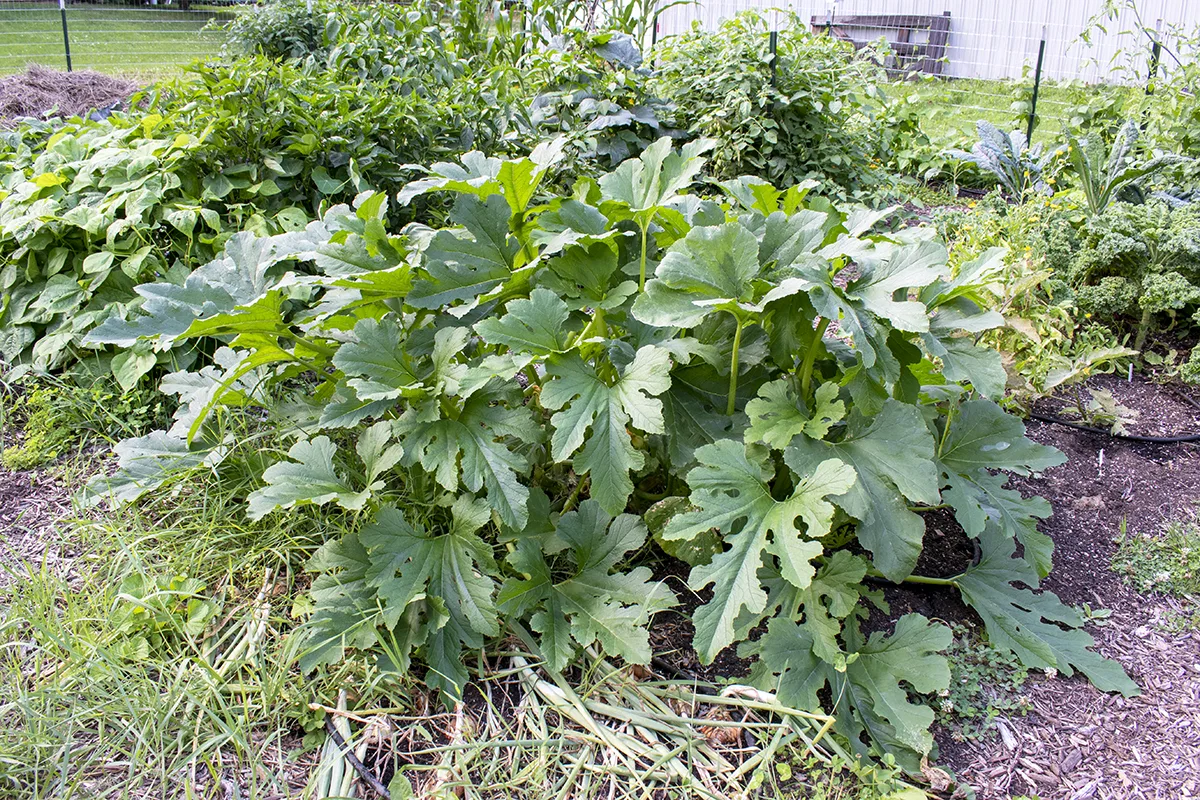
If you live in an area that experiences drought each season, you may need to take a good hard look at what you grow. It may be time to start planning your garden each season with drought in mind. Luckily, there are plenty of drought-tolerant veggie varieties to choose from these days.
2. Inoculate With Mycorrhizae
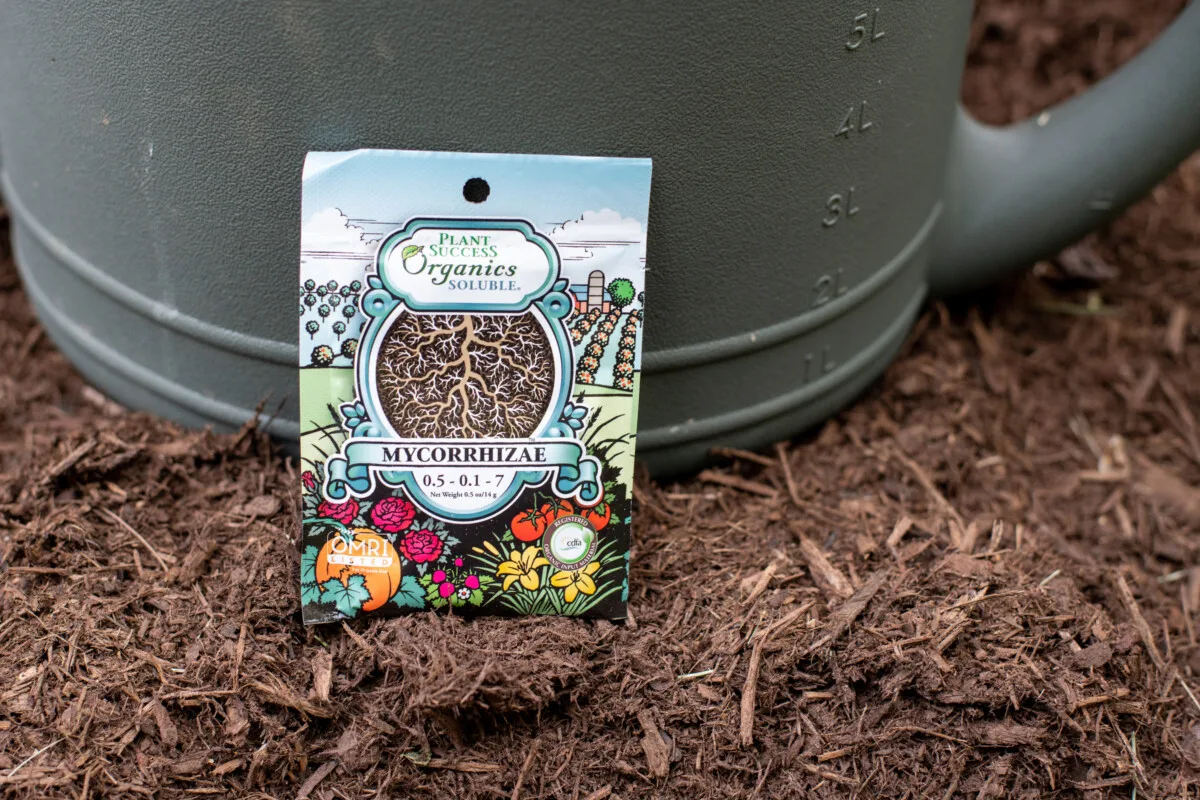
One of the best things you can do to protect plants from drought is to build up their roots. Mycorrhizae are microscopic fungi that attach themselves to plant roots, increasing the root surface area as well as the plant’s ability to take in water and nutrients.
Few plants on our planet grow without the aid of mycorrhizae. In fact, about 90% of plants rely on this symbiotic relationship to thrive.
But because the plants in our garden aren’t long-term residents, they aren’t connected to the established mycorrhizae in the soil in the same way that plants like grass, trees and other plants are.
However, you can inoculate the roots of seedlings before you plant them or use water-soluble mycorrhizae to inoculate plants already in the ground, thus creating a little colony of mycorrhizae for each garden plant. I highly recommend you don’t skip this step if you live in an area with frequent water bans.
3. Bury Plants Deeply to Encourage Adventitious Root Growth
The more roots you have below ground, the easier it is for your plants to reach water deep in the ground. If there’s one thing you want to do to establish a drought-proof garden, it’s encourage deep root growth.
Tomatoes, peppers and eggplants can grow new roots along their stems and anywhere there are leaf nodes.
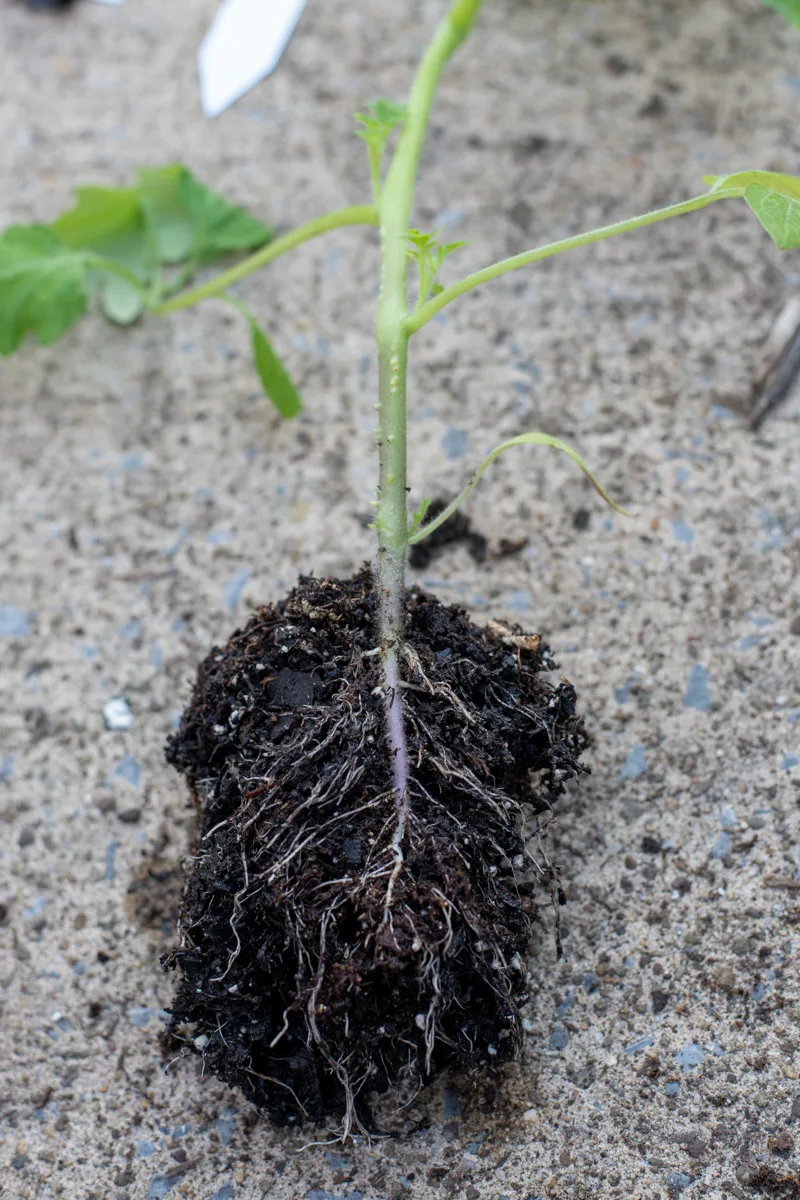
This is why we encourage you to plant tomatoes deeply or sideways.
While peppers and eggplants can produce adventitious roots along their stem, it takes them much longer than tomatoes. Care needs to be taken during this process, or the stems can rot in the ground. However, this is easily avoided by not overwatering your plants (not an issue in times of drought) and ensuring you have well-draining soil.
Trim the leaves from the portion of the stem that will be buried, as this will encourage root growth from those nodes once in the ground.
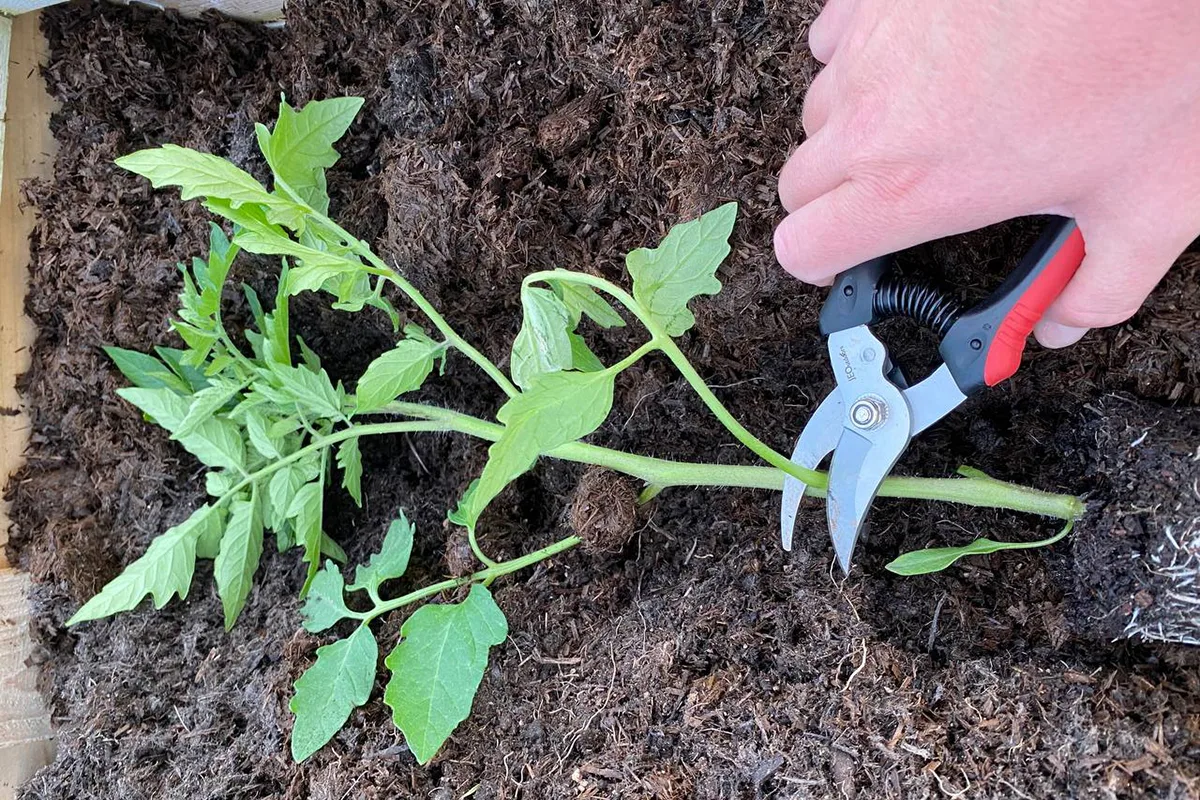
4. Set Up a Rain Collection System
When water is scarce, it makes sense to have a collection system ready when it does rain. Collecting runoff from your home can set you up with a water supply when you need it most without infringing on any bans in place.
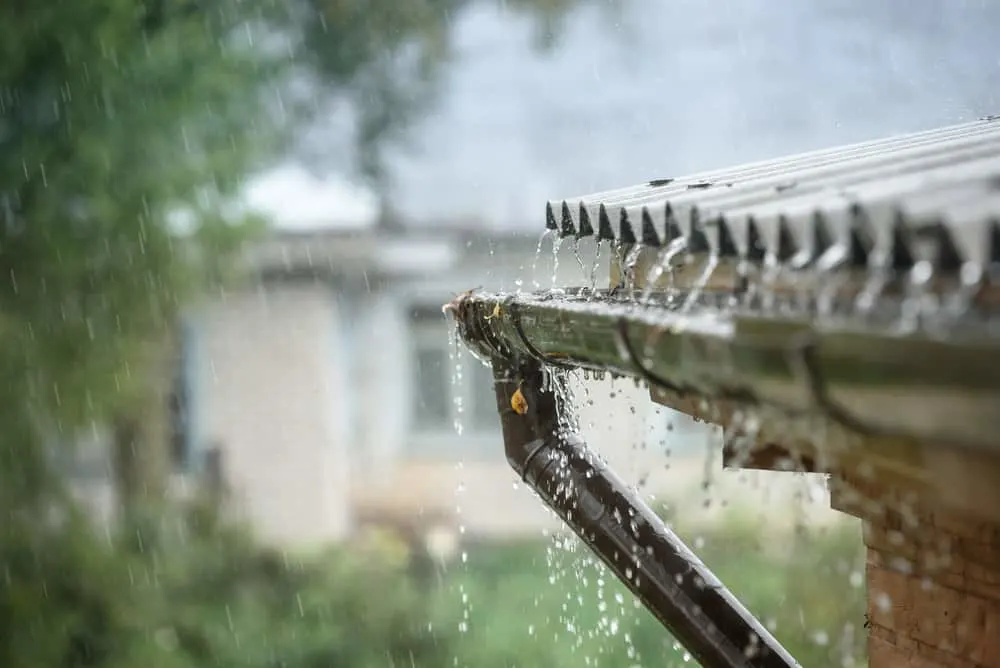
There are numerous ready-made systems you can purchase. But if you want to save a little money or enjoy DIY projects, we’ve got some great rainwater collection systems you can make yourself.
5. Mulch, Mulch, Mulch
Did I mention mulch?
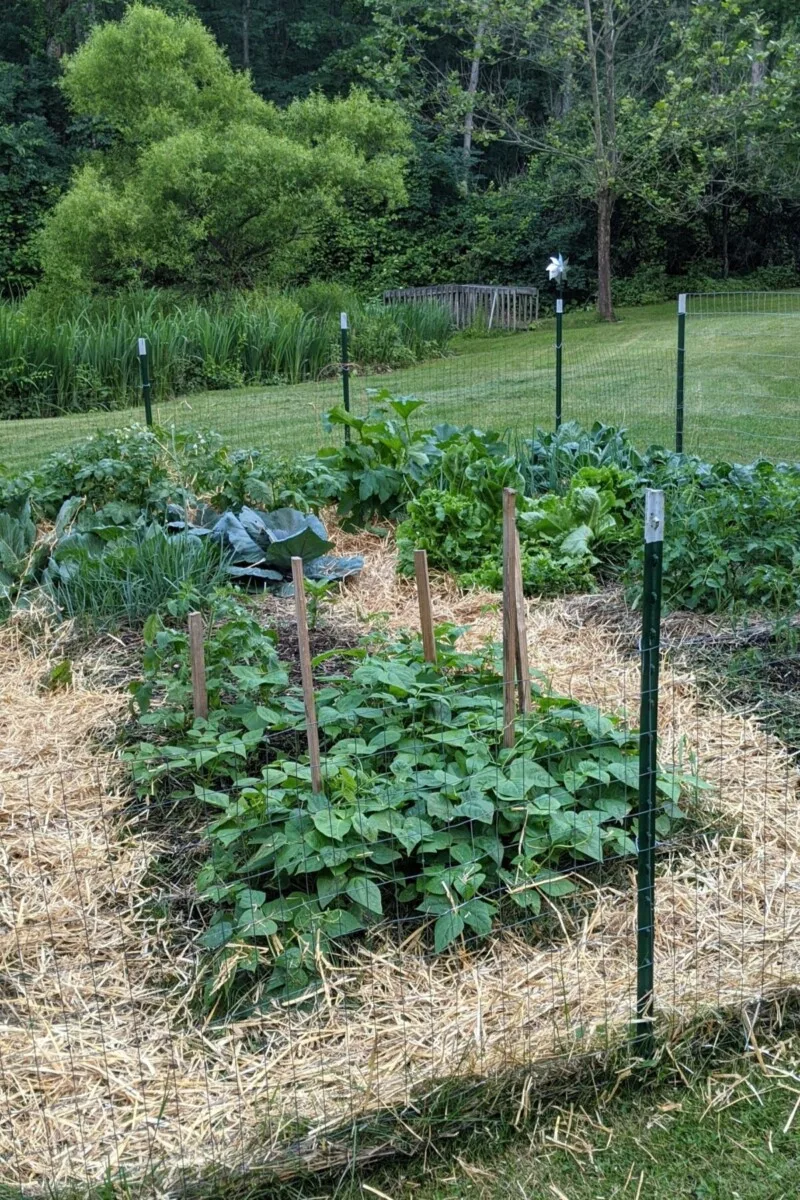
Bare soil is your worst enemy during a drought. Moisture evaporates faster than you can say, “Oh no, my tomatoes!” from bare soil. You want to create a barrier to lock in moisture and prevent it from melting away when the temperatures soar.
This means you need to mulch.
And not just around the base of your plant. If you’ve got bare soil in your garden, cover it with straw or plant something in that spot. You’re losing water your plants could use anywhere you have bare soil.
Aside from preventing water loss, mulching means fewer weeds which means they aren’t competing with your plants for nutrients and water.
You may even want to consider growing a living mulch. I know it sounds counter-intuitive, but having plants in places you aren’t actively growing garden veggies is one of the best ways to prevent soil erosion and moisture evaporation.
6. Plant Directly in the Ground
First, this comes with a caveat – I know not everyone has access to a yard or a space where they can plant directly in the soil.
That being said, if you can, plant your garden directly in the soil; even if the soil isn’t great, do it. You’ll have more success amending your soil and growing in the ground than growing in a closed-in raised bed or containers.
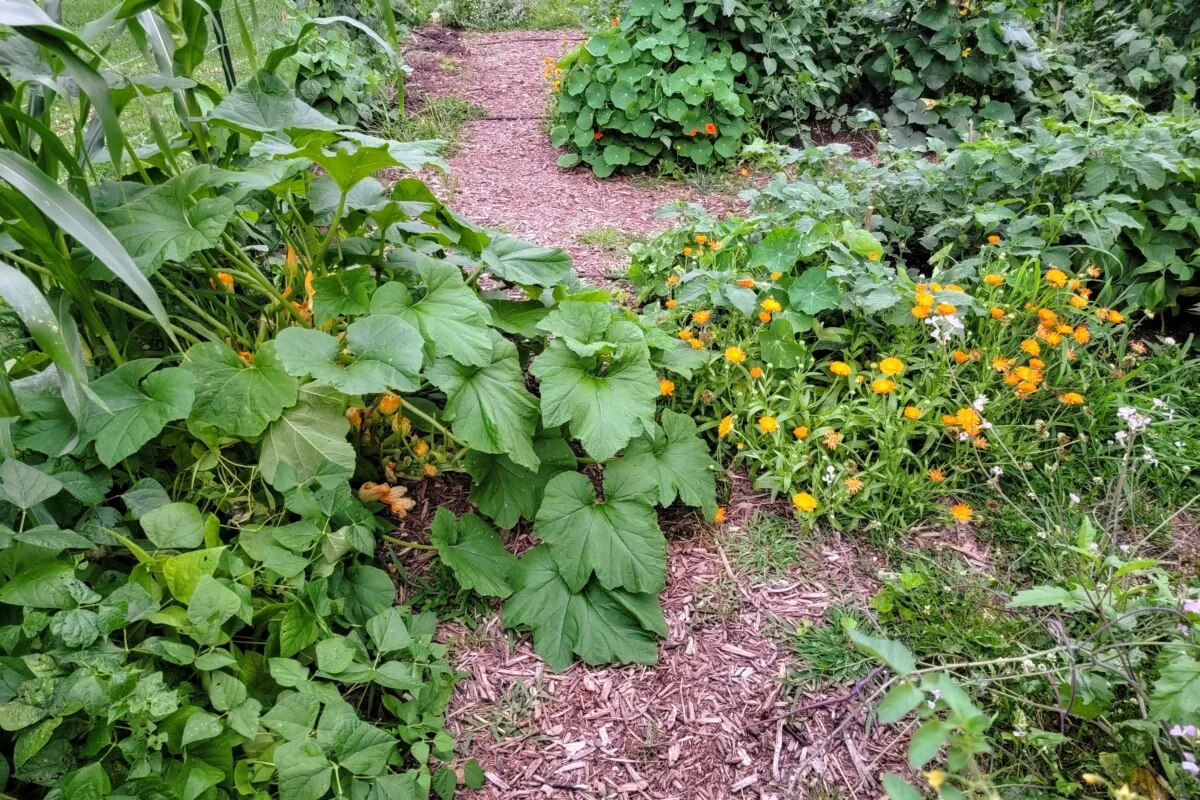
Container gardens and, yes, even contained raised beds are huge moisture hogs.
They lack the mass to hold water in the same way the ground does, so they dry out quickly and constantly need more water.
Wherever possible, grow directly in the ground, as plants can send roots deep where moisture levels are higher.
7. Add Organic Material to the Soil
Soil is made up of clay, sand, silt and organic material. The more organic material you have, the better the soil retains moisture.
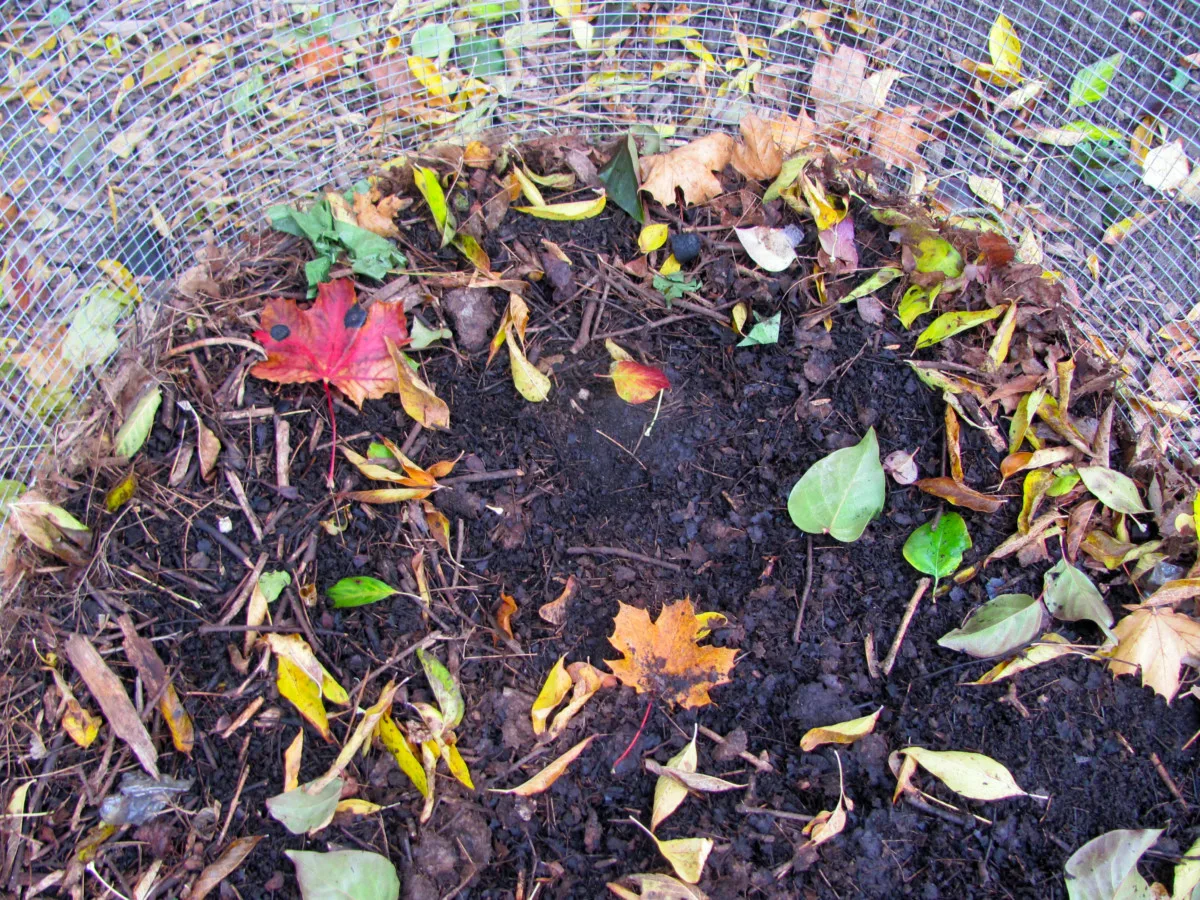
One of the best things you can do to improve the moisture-retaining ability of your garden is to make your transplant holes larger than needed and mix in compost or leaf mold (which you can easily make yourself) with the soil before planting your seedlings each season. Adding organic matter where the root system will develop adds an extra layer of moisture-trapping protection for the plant growing above ground.
Put another layer of leaves or compost on top of the soil at the end of the season to decompose in place.
Doing this every year adds a continuous supply of organic matter to the soil, where it can slowly break down, adding nutrients and, more importantly, holding moisture where needed. Over time, this benefits your entire garden.
8. Water Deeply, Carefully & Infrequently
We have a habit of reaching for the watering can whenever we notice our plant babies looking a little thirsty. But the best thing you can do to set your plants up for success is to water infrequently. Withholding water forces plants to push roots deeper into the ground in search of moisture. You’re training your plants to be ready for a drought.
When you do water, don’t skimp.
Light watering leads to shallow roots, which leads to plants that can’t take the heat.
Water each plant thoroughly, being sure to soak in plenty of water directly at the base of the plant. No indiscriminent watering here. You want the water right where it’s needed. Consider drip irrigation with leaders directly to each plant; that way, you aren’t wasting water.
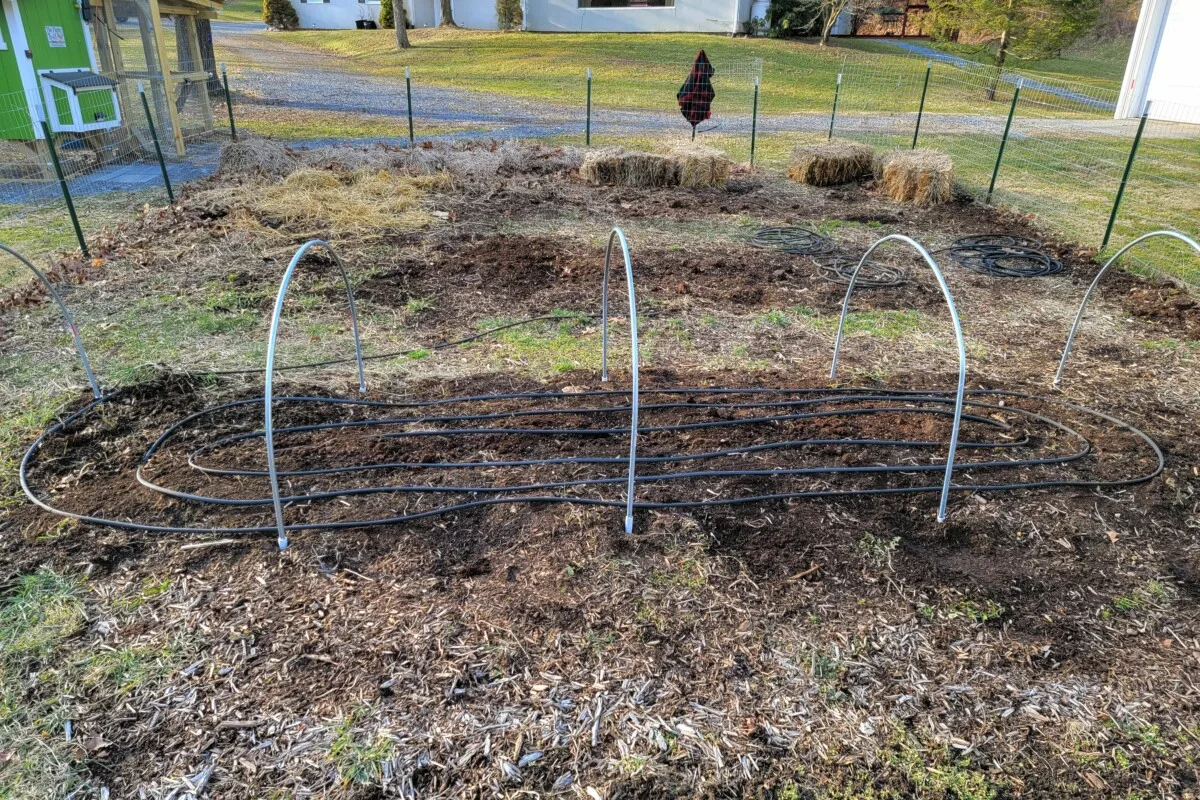
And you want the water to penetrate deep into the soil; to do that, you need to water slowly. Again a drip-style irrigation system or soaker hose is great at this. The water is less likely to run off and will soak deep into the soil.
9. Water In the Morning
When you are able to water your garden, do so first thing in the morning. Soil tends to open up and breathe more during daylight hours. Watering first thing in the morning allows the water to penetrate deeply into the ground. It also gives your plants plenty of time to dry off before evening, when damp leaves can lead to disease or rot.
Water will most likely evaporate if you water during the warmer parts of the day. Even if you mulch well, it’s important to water in the morning.
Watering in the evenings might sound like a good idea during a drought because you don’t want it to evaporate, but water tends to settle in the upper layer of the soil when you water in the evenings, which can cause plants to spread roots out rather than down. Not to mention the cooler temps of nighttime, along with the moisture can lead to soil-borne diseases and root rot.
10. Grow a Cover Crop of Green Manure in the Winter
Remember that bit about bare soil and evaporation? That doesn’t stop just because the growing season is over. If you leave your soil bare during the winter, you’re starting the growing season at a water deficit.
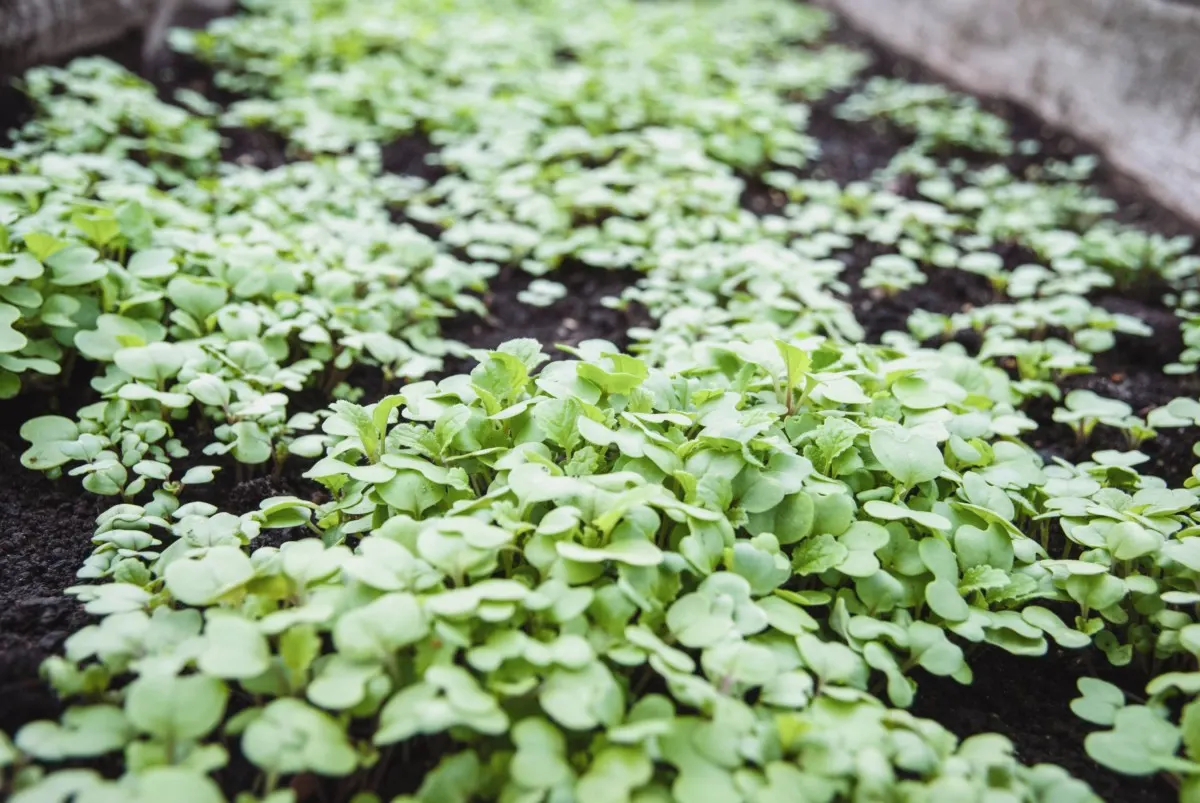
Consider growing a cover crop, also known as green manure, each winter. Not only will this help lock moisture into the soil, but it will fertilize the soil with nitrogen come spring when you till it under or cut it back for a no-dig garden.
11. Switch to a No-Dig Garden
No-dig gardens are amazing at conserving water. They rely heavily on leaving plants in place, adding plenty of mulch, and disturbing the soil as little as possible. All of these elements are key to holding moisture in place.
If there is one method of gardening that’s perfect for areas experiencing drought, it’s no-dig.
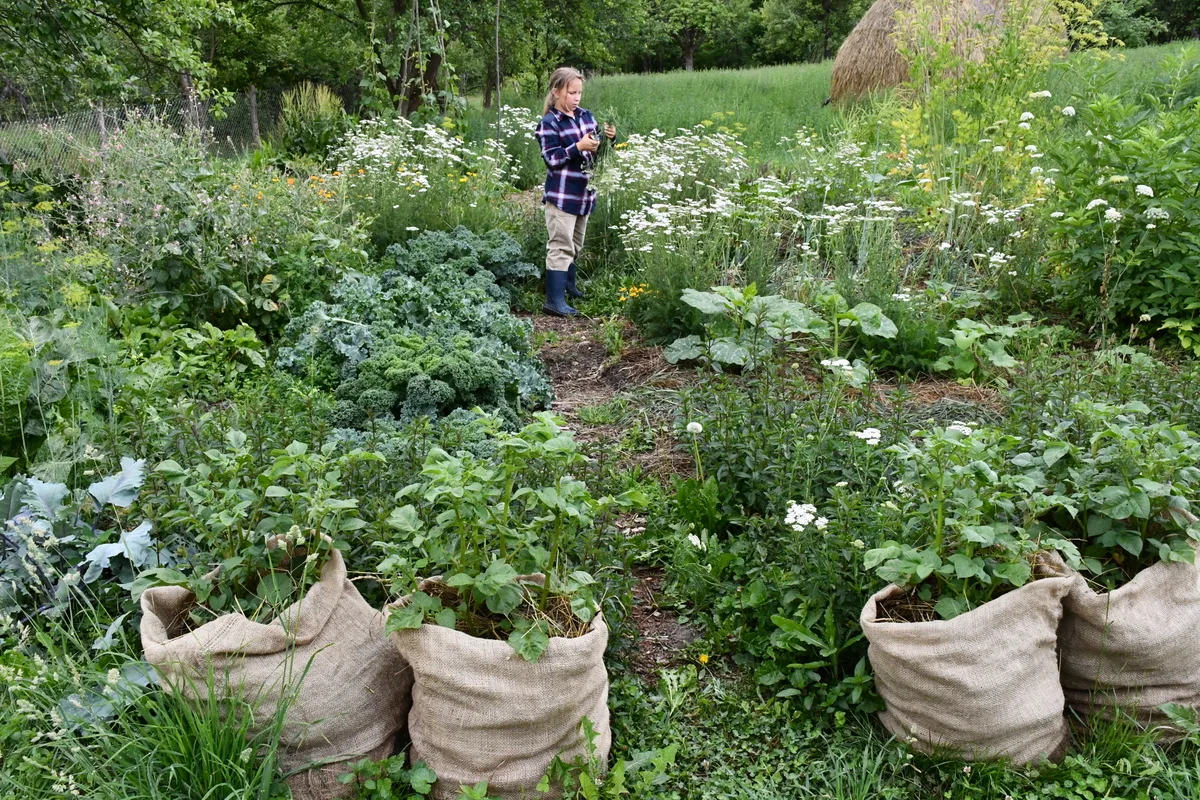
When you disturb the soil as little as possible, you’re allowing the natural root and soil structure that’s already in place holding water to continue to do so with the addition of your plants. And because there is very little bare soil involved with no-dig gardening, evaporation is less of an issue.
Cheryl can help you get started transitioning to a no-dig garden here.
12. Harvest Frequently
Once your plants begin to produce fruit, it’s important to make sure you’re picking it as soon as it’s ready. Don’t wait for tomatoes to ripen fully on the vine. Pick those green beans every day. Cut your cut-and-come-again-lettuce daily.
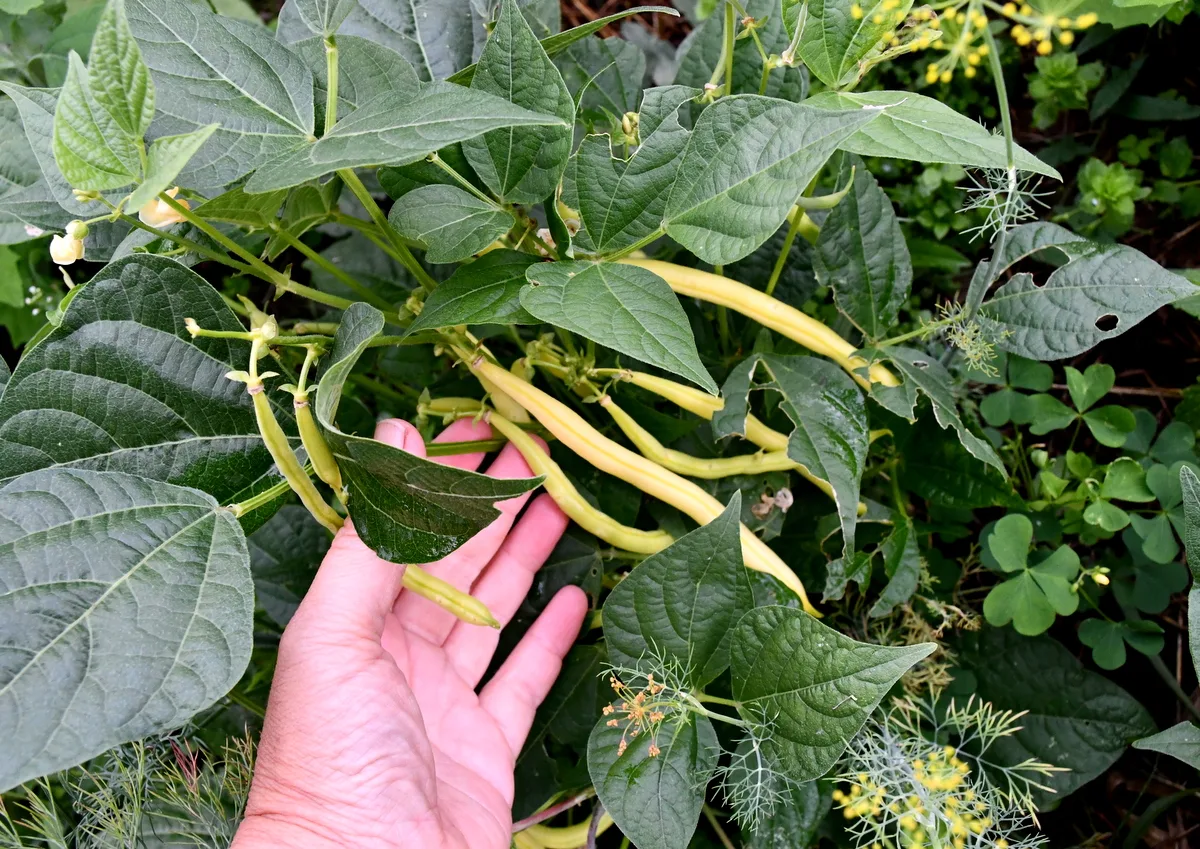
Remember, those delicious veggies you plant have one goal – they’re all trying to reproduce more of themselves. Given the chance, they will reproduce and call it quits for the season.
Direct your plant’s energy into creating more fruit or more leaves by picking both frequently.
If plants sit with fruit on the vine or leafy plants aren’t picked quickly, they will stop producing and move their energy and resources into going to seed (leafy plants) or dormancy (fruit-bearing plants). After all, their job is done.
Don’t Give Up Just Yet
Naturally, there comes a point where even these steps will no longer help. Plants can only go so long without water before the stress causes them to go to seed or stop producing fruit. And you may even reach a point where you lose the garden to severe drought.
But if you implement as many of these practices as possible, each is a little extra insurance against drought. And your garden will continue to grow, even when you can’t water it. Once plants acclimate to a dry summer, you may be surprised to see what your garden will produce even under a water ban.

Get the famous Rural Sprout newsletter delivered to your inbox.
Including Sunday musings from our editor, Tracey, as well as “What’s Up Wednesday” our roundup of what’s in season and new article updates and alerts.

